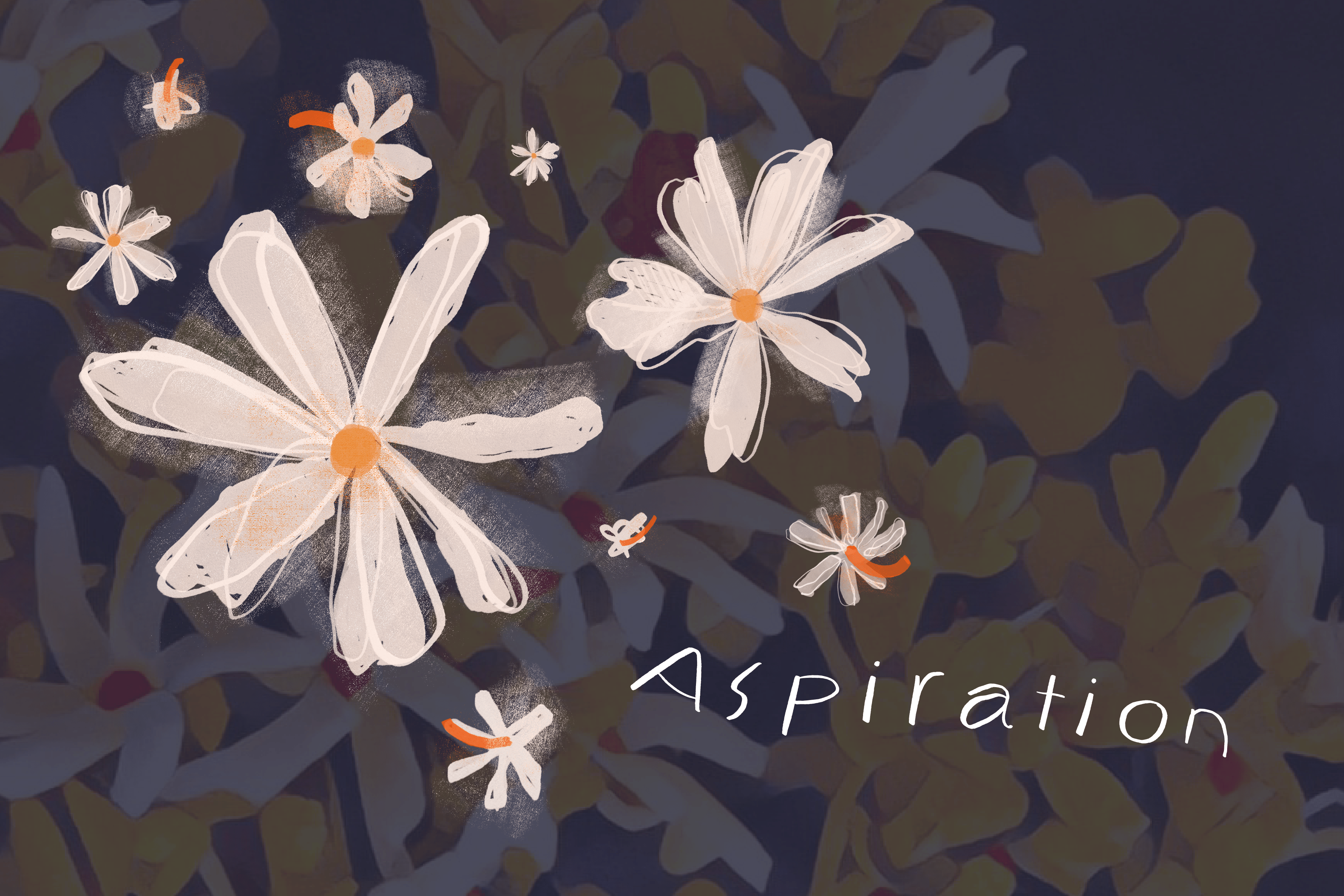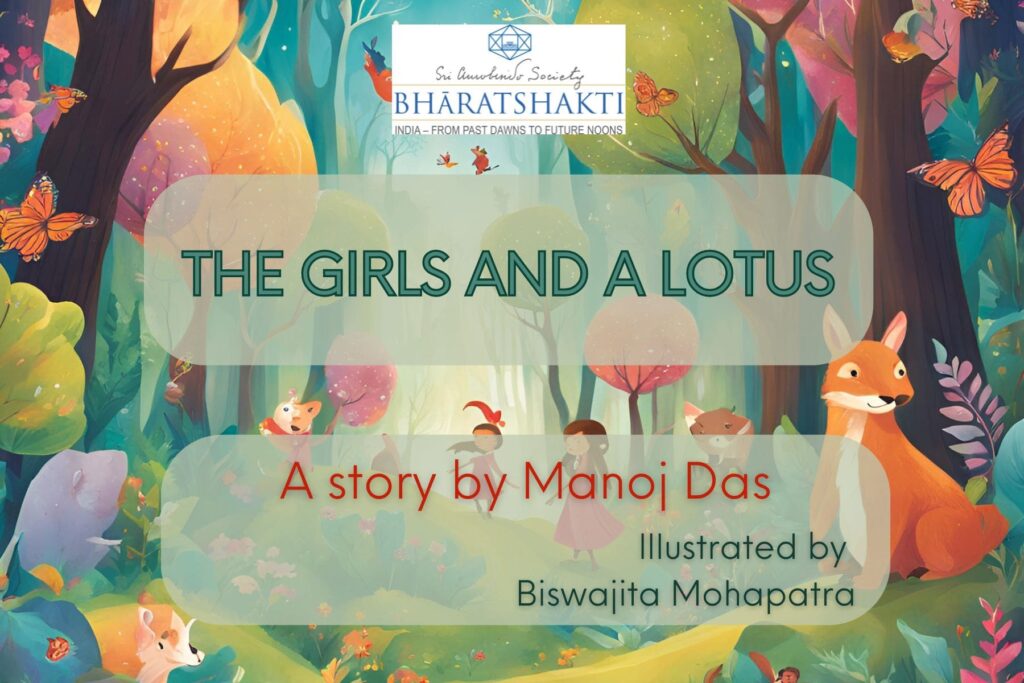Volume III, Issue 1
Author: Sheeba Naaz
Gladiolus is the diminutive form of Latin word “Gladius” meaning a little sword with reference to its tall sword-like leaves. They belong to the iris family (Iridaceae) and is also called as the sword lily.
While Gladiolus species are native to many parts of the world, it is originally from Africa. This flower is seen as the symbol of resurrection and rebirth in many ancient cultures. That is because it is basically a bulb and technically a corm that goes dormant during winters. It almost seems like the plant has died but in fact when the time is right, new sword like leaves sprout from the ground as if it is reborn.
When I first learned that the Mother had given the significance ‘receptivity’ to gladiolus flower, my immediate thought was about how we humans receive our first breath in order to be born. What if we are not able to receive that breath?
As I read more of the Mother, it started dawning on me that when the Mother talks about becoming conscious of our true self, or about psychic realisation, it’s almost as if we must die a symbolic death – die to our egos, so that we can be reborn again in our true and higher self, reborn to our divine self. This happens when we receive true knowledge of our self which comes as a breath of fresh air that enlivens us.
Most of us start living only after the spiritual ascension so to speak. Both the process of physical birth and the spiritual birth require an important aspect of “receptivity”.
It Takes a Fighter’s Courage
The same word Gladius is the root for gladiator, a fighter who fights against wild beasts with the help of his sword. A sword by itself wields no strength, unless the hand that holds it has immense courage. While the gladiator has the courage to receive the wild beasts knowing he can fight against them with total strength and surrender, a man who is on a spiritual quest does the same and is no less than a gladiator.
Some internet sites define the word “receptivity” with an example of a gladiator, who is willing to fight against the sheer animal forces through an act of receiving when no other man is willing to do so. A spiritual path too, among all attributes needs a very important trait of “receptivity”, a willingness to receive whatever is laid down in front of us.
The Mother through her divine sight saw “receptivity” as the spiritual significance of this flower, Gladiolus, which helps us grow spiritually. Receptivity is otherwise described as the willingness to receive. Most of the time we think of receptivity as passive, an act that doesn’t require us to do anything but just to receive. But in a deeper sense, receptivity is often a fight against our own ignorance that stops us from receiving the divine light of higher consciousness and supramental experience.
Being Receptive to Divine Grace
I am reminded of the lines from Sri Aurobindo’s Hymn to Durga:
“Mother Durga! Enter our bodies in thy yogic strength. We shall become thy instruments, thy sword slaying all evil, thy lamp dispelling all ignorance. Fulfil this yearning of thy young children, O Mother. Be the master and drive the instrument, wield thy sword and slay the evil, hold up the lamp and spread the light of knowledge. Make thyself manifest!”
(Bengali Writings, CWSA, Vol. 9, “Dharma”, No. 9, October, 1909)
This powerful hymn to Mother Durga says that unless the Grace descends upon us as yogic strength, we will not be able to find courage to use our swords at an appropriate time and place for our spiritual goal. To use the sword, we need to receive the Grace. Wayne Dyer, a famous author of our modern times is known to have said, “By surrendering, you create an energy field of receptivity for the solution to appear”.
So, how do we receive Grace, asked a disciple to the Mother. In response, the Mother says:
“The Grace is always with you; concentrate in your heart with a silent mind and you are sure also to receive the guidance and the help you aspire for.”
(CWM, Vol. 14, p. 87)
By gradual practice of concentration and meditation, one is gradually able to open this door which allows the light to shine in on the darkest corners of our ego and starts purifying and transforming it, bit by bit.

Being Open to the Guru’s Grace
It is easier said than done and lifetimes can pass by in order to perfect our practice. That is why a Guru is instrumental in our progress, showing us the path and acting as a mediator to help us receive the Divine Grace.
Again, a mistake disciples sometimes make is to attempt to intellectually ‘understand’ their Guru instead of receiving His or Her Divine Presence calmly into their souls without any doubt. What we fail to understand is this: to understand a master, one must himself become a master. We are primarily mental beings and often judge others with our own set of mental formulas. And while doing so, we fail to accept others from a place of surrender.
When we leave judgement and doubt aside, accept our Guru wholeheartedly – because let us also remember it is not we who choose our Guru, it is the Guru who chooses us, – there is bhakti or a sense of devotion that embraces us and this is the only way to receive Grace.
When we allow this grace of a Guru to embrace us like a waterfall, we will then commune with his soul instead of his physical appearance or intellect (though that too may also happen with its own inner gains for our all-round progress of the outer instruments of body, life and mind). This, in turn, will help us commune with the Divine grace, we may call it by whatever name – God, Source, Brahman or Universal Life-force.
Self-giving is the Secret
But then there is a secret of how to relate to our Guru. It is a relationship not only of our inner communion and receiving but also of self-giving. It comes not by eagerly taking what one can for oneself but also what one can give to the Guru, who is essentially Divine for the disciple. Only in a spirit of mutuality can the divine love be developed. This brings us to the question: How can we give ourselves to our Guru?
For this the wise ones say, it is through our sadhana. Our practice is the highest form of giving ourselves to our teacher. As our sadhana becomes stronger and stronger by the day, we begin to experience a greater silence within and find ourselves more and more in a meditative state. At this point, the door opens, bringing us the light of divine Grace we so aspire for. This is the yoga we practice day in and day out.
As Sri Aurobindo says:
“The yoga we practise is not for ourselves alone, but for the Divine; its aim is to work out the will of the Divine in the world, to effect a spiritual transformation and to bring down a divine nature and a divine life into the mental, vital and physical nature and life of humanity. Its object is not personal Mukti, although Mukti is a necessary condition of the yoga, but the liberation and transformation of the human being. It is not personal Ananda, but the bringing down of the divine Ananda—Christ’s kingdom of heaven, our Satyayuga—upon the earth.”
(CWSA, Vol. 13, p. 71)
Open Wide the Consciousness to the Divine Influence
To sum it all, we need grace to use our sword to slay the ignorance that stops us from opening the door of receptivity. To receive the Divine Grace, one has to have the blessings of a Guru. But then, to receive the blessings of a Guru means to be sincere with our sadhana or practice.
Even though many of us practice and pursue a steady sadhana, have an ardent faith and devotion to our Guru, still only a few of the aspirants actually progress on the path. Some progress faster, some a little bit slow and yet others stall on their path. Once a disciple asked Sri Aurobindo: while all of us have the equal privilege of being close to Divine, why then does the Divine shakti cannot make us progress equally?
For this Sri Aurobindo answers that even if the Divine wants to give us more, we are not sufficiently open to receive the gifts. Receptivity is the flow of cosmic energy and cosmic light. This cosmic light has the ability to expand, so never be satisfied with the amount of light you receive.
Also read:
Be Open Like a Flower and Receive the Light
With the power of concentration and gratitude, open the door of receptivity a little bit more. He writes to one of his close disciples:
“The fundamental principle and the whole method of the Integral Yoga is to open wide the consciousness to the divine influence. Only those sādhaka-s who can sufficiently open themselves to the divine power and action and receive them in themselves, can cherish a hope for the ultimate realisation, not others.”
(as cited in The Practice of the Integral Yoga, by Jugal Kishore Mukherjee, 2003, p. 75)
Be Like a Child
One way to increase receptivity is to be like a child. No matter how advanced we are in our spiritual path, we can make the fastest progress by having a child-like attitude, a sincere and genuine feeling of a child.
Another way to increase our receptivity is to offer our highest gratitude to the Divine every single day, especially before we commence our meditation. We have so many near and dear ones and not all of them are selected to follow a spiritual path. Then why are we chosen and why has the Supreme given us the aspiration inside us to follow this path. If we reflect upon this one attribute and offer our heartfelt gratitude, receptivity is bound to increase by leaps.
The Supreme is like sunlight that wants to brighten up our day, but if we keep only one curtain open then it cannot enter. It is up to us to open all the curtains so that the maximum of light can reach us.
“Every morning at the balcony, after establishing a conscious contact with each of those who are present, I identify myself with the Supreme Lord and dissolve myself completely in Him. Then my body, completely passive, is nothing but a channel through which the Lord passes His forces freely and pours upon all His Light, His Consciousness and His Joy, according to each one’s receptivity.”
(The Mother, CWM, Vol. 16, p. 228)

Click HERE for more flower-meditations.
~ Graphic design: Shahla Sayeed



